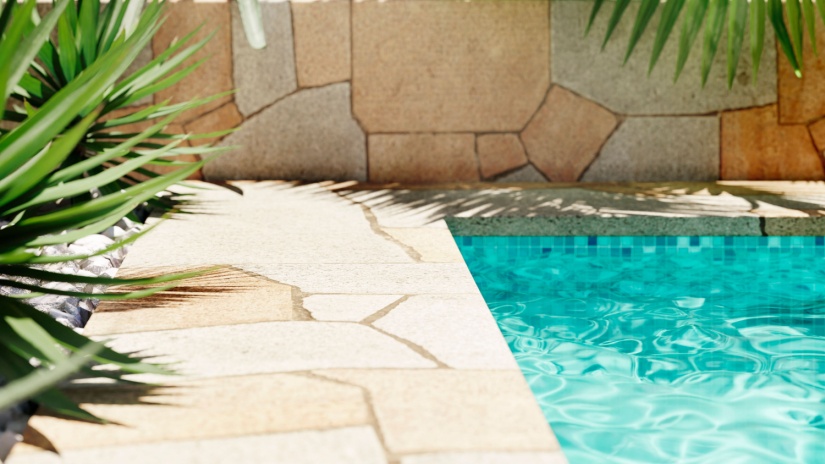Knowledge Centre
How much is your swimming pool costing you?

Summer in Australia just wouldn’t be the same without a dip in the pool on a hot day. It’s the perfect way to cool off, and it gets the kids outside and active too. But have you ever stopped to think about how much that pool is really costing you?
Pools are becoming more common, especially in northern parts of Australia, where about one in five homes has one. The average pool holds between 40,000 and 50,000 litres of water. While swimming pools are great for fun and relaxation, the cost of maintaining and running them can add up quickly.
One reason for this is that homes with pools are often larger, have more people living in them, and tend to use more energy overall – like running several air conditioners. So, just how much is your pool contributing to your electricity bill?
Running your pump
Monthly cost: $7-$20
To keep your pool clean and algae-free, the filter pump needs to run regularly, usually for 6 to 8 hours each day during the warmer months. In winter, you can reduce the running time as the water temperature drops, and algae growth slows down.
However, running the pump so frequently can result in high electricity costs. The good news is that more energy-efficient pool pumps are available, and they can significantly help lower your monthly energy bills, so look for the ones with the higher star ratings. These pumps are designed to use less power while still effectively filtering your pool, saving you money in the long run.
When shopping for a pool pump, look for models with energy efficiency ratings, which are similar to the labels you see on household appliances like refrigerators and heaters. These ratings give you an idea of how much energy the pump uses compared to others on the market, helping you make a more informed decision.
Heating the water
Monthly costs (Over a 6-month season)
- Solar heating: $16–$40
- Electric heating (Non-Solar): $50–$250
- Gas heating: $100–$250
Unless you’re a fan of chilly water, having a heater is essential for a comfortable swimming experience. There are three main types of pool heaters: solar, electric, and gas. Each option has its own costs and benefits, depending on your needs and local climate.
Solar heating
Solar heaters are by far the most affordable to run, costing between $16 and $40 per month over the 6-month swimming season (October to March).
The sun does most of the work, making it an environmentally friendly choice. While solar heating relies on sunny days, it's a great option for those in sunny climates. We’ll come back to solar heating later!
Electric heating
Electric heaters, which don’t rely on sunlight, cost between $50 and $170 per month during the swimming season. While they are reliable and can heat your pool regardless of the weather, they tend to heat the water more slowly than other options.
They are a good choice if you need consistent heating year-round but might take longer to reach your ideal temperature.
Gas heating
Gas heaters can get your pool warm in no time, but they are the most expensive option, costing between $100 and $250 per month.
They work well in any season, but their high energy usage can make them costly. However, they are not the most eco-friendly option, and repairs can be tricky and expensive.
Things that affect heating costs
You might notice a big difference in heating costs based on several factors, including:
- Location: Where you live plays a huge role in how much it costs to heat your pool. For example, Brisbane is one of the cheapest places to heat a pool, while Hobart is one of the most expensive due to its colder climate. The further south you go, the more energy it takes to warm your pool.
- Target temperature: The temperature you aim to keep your pool at also affects costs. Heating to a comfortable 26°C will be much cheaper than pushing it up to 28°C. For every extra degree, your energy costs can increase by around 30% over the season.
- Swimming season: If you only heat your pool during the warmer months (October to March), costs will be more manageable. However, if you try to extend your swimming season into the cooler autumn or winter months, expect a significant rise in heating expenses.
As you can see, solar heating is the most cost-effective, while gas heaters are quick but pricey. Electric heaters offer a reliable middle ground. The exact cost will depend on your location, the temperature you want, and how long you keep your pool warm each year.
Other costs to consider
Maintaining a pool comes with ongoing expenses that can add up over time. On average, you can expect to spend around $50 per month on maintenance, which includes several key factors.
One of the main costs is replacing lost water due to evaporation. In December, about 5.21mm of water evaporates daily from your pool. For a 6m x 4m pool, that equals about 125 litres of water lost each day, or 3,750 litres per month. At $2.50 per kilolitre, this adds up to around $9 a month, with more water lost when temperatures rise, or humidity drops.
Chlorination and cleaning are also important regular costs. If you manage chemicals yourself, expect to spend around $200 annually, or $17 per month, on chlorine and other pool care products. However, even with regular self-maintenance, you'll likely need professional cleaning services from time to time.
Pool cleaning companies charge around $60 to $150 for a standard clean, and you may need them up to four times a year. This adds another $33 per month to your budget, totalling around $400 annually for professional services.
There are other maintenance costs for things like pool nets, water pumps, and occasional repairs such as patching cracks or replacing the lining. These costs can vary widely but typically run between $100 and $300 per year, or roughly $17 per month.
All these combined maintenance costs can make owning a pool a significant investment, adding up to about $50 per month in ongoing expenses.
Could solar heating save money on pool costs?
If you're currently using gas or electric heaters, the answer is yes - a solar pool heater can save you money in the long run.
Solar pool heaters work by using energy from the sun to heat your pool water. The system pumps water through tubes on your roof, where it absorbs heat from the sun before returning to the pool. Since you're only paying for the energy used to pump the water, rather than for the heat itself, solar heaters are much cheaper to operate compared to gas or electric heaters.
However, they are more expensive to install, costing anywhere from $1,000 to $5,000 for the system, with installation fees of up to $2,500. Despite the higher upfront cost, solar heaters are affordable to run and can last for 10 to 20 years with proper care.
| Pros | Cons |
| Lower operating costs compared to gas/electric heaters | Less effective in cold or cloudy weather |
| Requires minimal maintenance | Heats water slowly |
| Environmentally friendly | Needs a large surface area for collectors |
| Can be paired with a gas/electric booster on cloudy days | Roof pipes can be damaged in storms or by animals |
How to lower the costs of running your pool
If you're looking to reduce your pool’s ongoing costs, there are several effective strategies beyond just installing a solar heater. Here are some smart ways to save money while maintaining a well-functioning pool:
Check your energy costs
Check your electricity bill to know whether your pool is costing you currently and upgrade to a new energy plan to be more efficient.
You should call our friendly team at Compare Energy on 1300 790 106 to get the best possible plan upgrade to fit your budget.
Get a new pool cover
One of the most cost-effective ways to reduce pool expenses is by purchasing a pool cover. A pool cover significantly cuts down on water evaporation, which not only helps save money on water refills but also helps maintain your pool’s temperature.
The cover traps the warmth in, meaning your heater won’t have to work as hard, leading to savings on energy costs. In addition, it keeps your pool cleaner by preventing debris from falling in, reducing the need for frequent cleaning.
Run the pool pump overnight
If your electricity provider uses a time-of-use tariff, consider running your pool pump at night when energy rates are lower. This can lead to significant savings over time, as the pool pump is one of the largest energy consumers in your pool system.
By shifting this task to off-peak hours, you can make your pool more affordable to maintain without sacrificing its cleanliness and hygiene.
Upgrade to an efficient pump
Modern pool pumps come with energy efficiency ratings, many of which are part of the E3 Program. A higher-rated pump (e.g., a 9-star rated pump) is much more efficient than older or lower-rated models (such as a 6-star pump).
While more efficient pumps may come with a higher initial cost, they will save you a lot of money over time in energy consumption. It’s worth considering an upgrade if your current pump isn’t as efficient.
Don’t skip out on the maintenance
Regular pool maintenance is crucial for ensuring that your pool operates smoothly and without expensive issues. By checking the pool’s equipment, cleaning the filter, and maintaining the pump and heater, you can prevent small problems from becoming major and costly repairs.
Regular upkeep will also extend the lifespan of your pool equipment, meaning you won’t have to replace them as often.
Make sure that you have adequate pool insurance
Pools are a big investment, and you’ll want to make sure you're properly covered in case of unexpected damages. If your home insurance policy doesn't cover your pool, it might be worth adding a pool-specific insurance rider. This can help you avoid significant financial losses should something go wrong, such as storm damage or equipment failure.
Contact Compare Energy today
Are you looking to save some cash on your electricity or solar bills this summer? Call Compare Energy on 1300 790 106 today and we'll work with you to find the best option that allows you to save on keeping your family cool!

